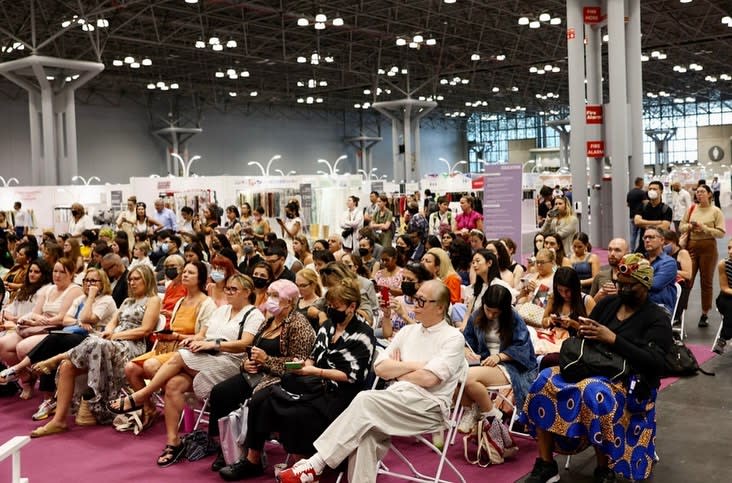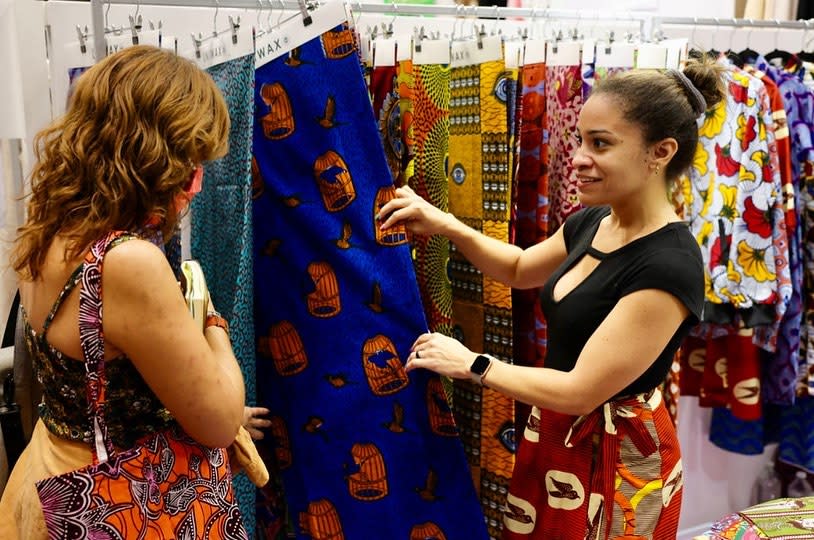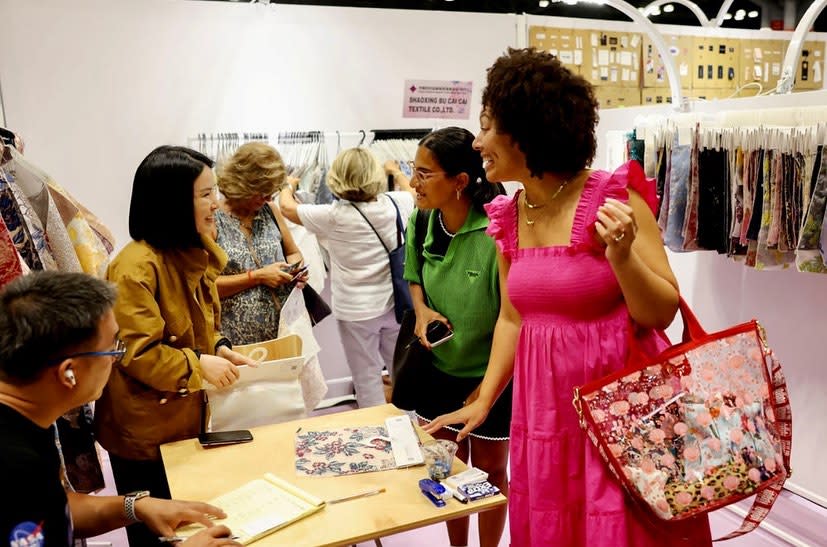Texworld New York City Sees Market Fluctuations, Sustainability Focus

Texworld New York City’s summer edition centered its focus on textile sustainability solutions and initiatives — but exhibitors indicated a collective mood of instability in the market.
The event held on July 19 to 21 at the Jacob K. Javits Center offered an in-person and hybrid experience for its three-day event that was colocated with Apparel Sourcing New York City and Home Textiles Sourcing. Showcasing a record number of country pavilions, the show drew in hundreds of exhibitors, inclusive of representation from South Korea; Uzbekistan; India; Taiwan, and Bangladesh.
More from WWD
Textile Talks, Lenzing Seminar Series and Explore the Floor tours are perennially popular with attendees, and at this edition the sessions featured experts speaking to the latest in economic and supply chain challenges, sustainable strategies and legislations, and accelerating circularity, among other topics, show organizers said.
A new partnership with Material Exchange and Footwear Distributors and Retailers Association led to the debut of Global Footwear Sourcing, a showcase that featured a range of footwear material components including leather, synthetic, laces, insole, outsole, webbing and ribbon, thread and yarn, and hardware.

And its trend showcase, curated by Kai Chow, creative director at Doneger Tobe, expressed a brighter vision of the market through themes called Beyond: Color Therapy; Future Craft; Hyper Nature, and Spirit Quest.
But the textiles industry itself has proven to be unsteady as of late. Mike J. Simko, global marketing director at Hyosung, told WWD, “Unfortunately, the textile market is concerning. With inflation, inventory issues throughout the supply chain, and the potential for an economic downturn, the second half of the year will likely be a challenging one.”
Simko added that COVID-19 exposed many vulnerabilities in textile supply chains. “Long lead times have caused delays in receiving product resulting in retail shortages in some instances, and excessive inventory builds in others. So, brands and retailers are rethinking their supply chain partners and streamlining operations. Geopolitical concerns are driving shifts in sourcing regions with the objective of country diversification or avoiding some regions all together.”
But on a brighter note, Simko said discussions concerning sustainable textile materials are getting more sophisticated.
“Driven by circularity, brands are more interested in cleaning up our own textile waste rather than taking waste from other industries. Many want to move beyond recycled materials and are looking at bio-based and biodegradable materials. To this point, Hyosung has introduced its creora bio-based spandex, which replaces some of the petroleum-based raw materials with ones derived from industrial dent corn,” he noted.

Patricia Ermecheo, chief executive officer and founder of Osom Brand and OsomTex, said that from what she has perceived, the current state of the textile market is in a state of transformation and regeneration. Ermecheo’s Osom Brand, which is female founded and led, just opened the doors to her Miami-based upcycling factory in late July, at a time when sustainability is the cornerstone for the future of textiles.
“The textile industry is rethinking the way they have been doing things for the last 20 years, at least. We are talking about the supply chain crisis, material content and consumer strategy, who are now actually asking for a lot more transparency, accountability and sustainability in the way products are made and disposed,” Ermecheo told WWD.
And post-pandemic, textile market dynamics have shown that brands are indeed connecting differently with consumers, according to Tricia Carey, director of global business development, Denim and Americas, at Lenzing Group.
“Brands are connecting differently with consumers as the digital interface is much greater through social media and websites. Consumers can find more online, and their store experience expectations is one of personalization and service, which can be substandard at retail with lack of customer service support and spotty inventory.”

Continuing the consumer front, Steve Stewart, chief innovation officer at The Lycra Company, said brands and retailers are focused on developing better quality clothing that lasts longer and can be recycled and recirculated back into production, as the secondhand market is projected to double in the next five years and reach $77 billion.
“Sustainability is the textile industry’s primary focus and will likely remain that way for the foreseeable future. More specifically, the focus is on creating a circular economy by educating customers on the importance of buying high-quality products that fit better and last longer and recycling their used clothing rather than disposing of it in a landfill.”
“A primary driver is creating a more circular economy within the industry,” he noted. “We consider our products to be the building blocks of a more sustainable industry, which drives new product development to further enhance the durability of brands and retailer products — and drive sustainability.”
MORE BUSINESS NEWS FROM WWD:
Astronaut Karen Nyberg Launches ‘Earth Views’ Fabric Line
Evrnu Develops Recyclable Material Made Entirely of Textile Waste
Citizens of Humanity, Net-a-porter Partner for Denim Collaboration
Sign up for WWD's Newsletter. For the latest news, follow us on Twitter, Facebook, and Instagram.

